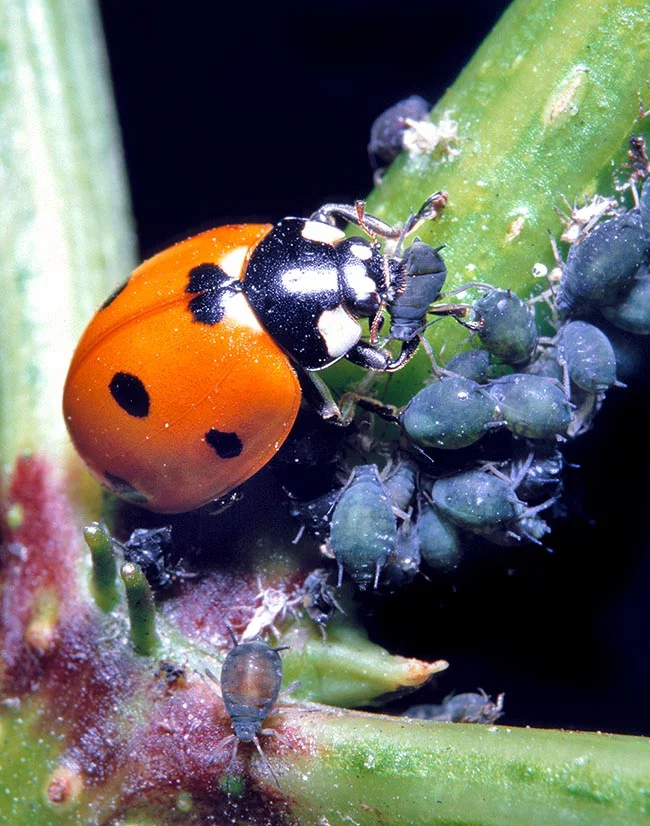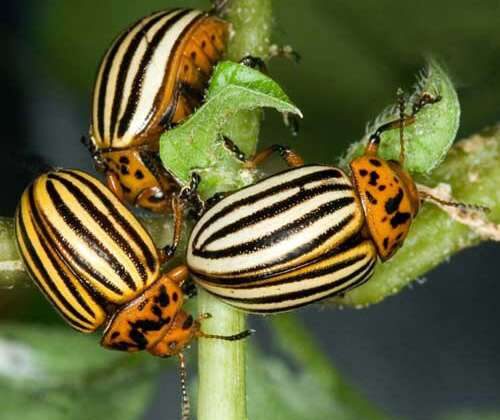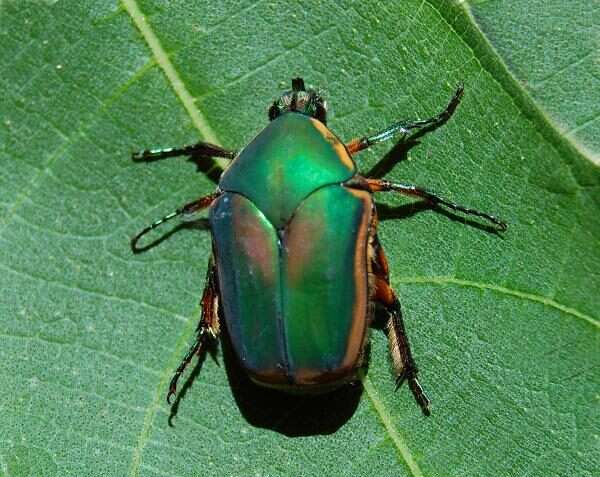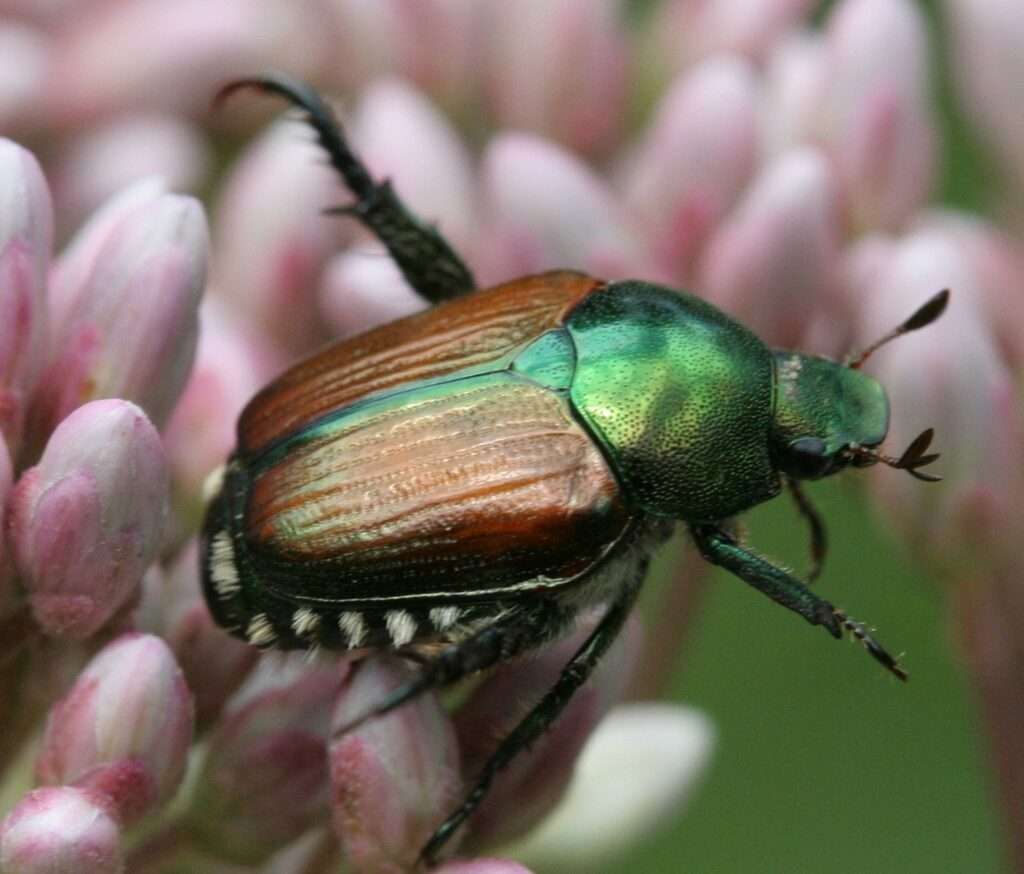
A vibrant beetle is the seven-spot ladybird (Coccinella septempunctata). Its head, legs, and stomach are black and white, and it’s back (wing cases) is red with seven black spots. It measures 5-8 mm long as an adult.
In Europe, Coccinella septempunctata is the most prevalent ladybug species. Individuals who wanted to avoid eating dangerous insects brought it to North America. The family Coccinellidae, which belongs in the suborder Cucujiformia, includes ladybirds.
Geographical Location
Originating in Europe and Asia, Coccinella septempunctata is now widespread in North America, Middle East and India. Between 1951 and 1971, C. septempunctata was purposefully introduced into the U.S. on a number of occasions as the biological control of aphids of crop threatening. The eastern United States and Canada had an increase in population.
Habitat
This species can be found wherever there are abundant prey species, especially aphids. Small herbaceous plants, trees, and shrubs are typically included in this, and they can be found in grasslands, open fields, marshes, suburban gardens, agricultural fields and parks. For this species, a south-facing, open region with sheltered rocks, small tussocks, or hedgerows of closely packed grasses is the ideal overwintering habitat.
Description of the body
- Coccinella septempunctata has the classic ladybug appearance: a medium size, an orangish-red elytra, and black dots. However, a number of distinctive traits can recognize it.
- On its elytra, this species normally has seven black dots (although it can range from 0 to 9). There is a single point that connects the two elytra near to the scutellum; immediately above this black scuteellar spot, on either side of the scutellum are two white patches.
- Each elytra has three spots, which can be found in different places and vary in size. Along the anterior side of the pronotum, this species features two distinctive pale white dots.

Feeding Habits
A polyphagous species, Coccinella septempunctata primarily feeds on aphids and other insects of a similar size, but adults will also consume pollen when aphids and insects are scarce. If necessary, some adults will even consume conspecific eggs or larvae. In general, larvae are aphid predators, but if aphids are not present, they will consume other Coccinellidae larvae. Cannibalism and intragroup predatory behavior are significant stressors on this species and family.
Behavior
The daytime is when Coccinella septempunctata is most active. It is a flying, motile species. This species’ propensity to congregate throughout the winter is a significant part of its habit. Although aggregates of over 200 individuals have been observed, the adults of this specie often form groups of individuals under low-lying grasses or between stones.
Longevity
The lifespan of an adult Coccinella septempunctata varies from 1 to 2 years, depending on whether it makes it through the winter.
Economic Importance for Humans
Positive
Given that its primary target is the aphid, a significant agricultural pest, this beetle species is frequently utilized for biological control in agricultural contexts. Small Hemipteran insects known as aphids feed on the phloem of a wide range of plants and can significantly reduce agricultural output. Aphids also cause damage to plants by dispersing fungus and pathogens inadvertently. One of the most effective aphidophagous insects, C. septempunctata, has been used to reduce aphid populations all throughout the United States. C. septempunctata is very helpful to humans since they require crop security from aphid infestations due to its performance in a wide variety of settings.
Negative
This species’ potential dominance outside of agricultural areas could be detrimental to the health of the entire ecosystem. Any efforts at retrospective restoration could be expensive for people. As it occasionally gets unintentionally stuck on crops and mixed in with the wine-making process, Coccinella septempunctata is also a pain for the wine business. C. septempunctata’s chemical output degrades the flavor and quality of wine.
Keeping as Pet
Requirements
- Choose a plastic container with holes for airflow. You can use any plastic storage container you have, the bigger the better so your ladybug has room to fly around, or you can purchase small clear containers like Kritter Keepers that are made for insects. If the lid of the container doesn’t already have air holes, make some by poking holes 1 inch (2.5 cm) apart—just be careful that the ladybug can’t escape through the holes!
- The ladybug’s natural habitat is imitated with dirt, twigs, and leaves. Gather a few organic things from the area where you took the ladybug and place them in the container to help the ladybug feel at home. For example, spread some soil in the bottom and add some grass or leaves.
- Ladybug can get some water from a wet paper towel. A ladybug doesn’t need much to satisfy her thirst! All you need is a damp paper towel or cotton ball; just make sure to check them after a day or two to make sure they haven’t dried out.
- Simple foods like lettuce, honey, and raisins are readily available to ladybugs. Before adding some raisins to the habitat, soak them in water for a minute to make them simpler for your ladybug to eat. Include a fresh lettuce leaf or a leaf from the outside. Honey is another source of energy for ladybugs; place a tiny bit of honey and two to three drops of water in a bottle cap. Unless you can locate a reliable source of aphids, these foods can serve as your ladybug’s primary meal.
Table





